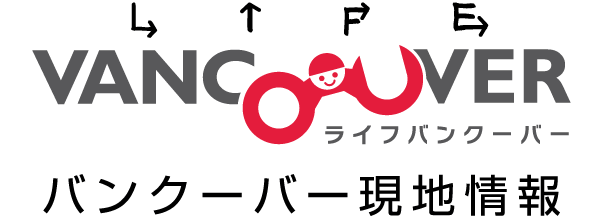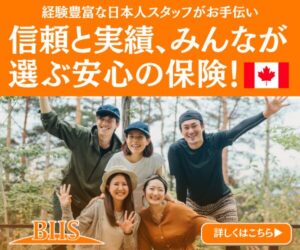? Regular handwashing
↔️ Keeping a safe space and no physical contact.
✅ Allows public health to quickly identify and contact people when necessaryLearn more: https://t.co/6mNvLCmqAu#COVIDBC #bced
— BC Government News (@BCGovNews) August 19, 2020
9月からいよいよ学校が始まりますが、「子どもを学校へ行かせて大丈夫だろうか?どんな対策をしているんだろう?」と考えている親御さんも多いかと思います。
今回は全てではありませんが、BC州政府による学校再開計画についてのページの一部を日本語に意訳したので、まとめてご紹介します。
以下、カナダ政府または公式発表の参照サイトを掲載しておりますので、最終的にはサイトを確認の上、ご自身の責任で確認ください。また、本件に関するお問合せは受けかねます。もし誤訳や解釈などが間違っている場合はご指摘頂いた後、できるだけ速やかに修正するように致します。皆さまどうぞご協力ください。
目次
- 安全衛生対策(Health & Safety Measures)
- 学習グループについて(Learning Groups)
- オリエンテーションについて(Orientation Week)
- 新型コロナウイルスと子どもに関するサイエンス(COVID-19 Science & Children)
- COVID-19プロトコル(COVID-19 Protocols)
- 子どもが学校に戻る前のテストについて(Testing Students Before a Return to School)
- 学習グループ内 or 学校で新規感染者が出た場合(Confirmed Case of COVID-19 in a Learning Group or at School)
- 出席要件(Attendance Requirements)
- 追加のニーズのサポート(Supporting Additional Needs)
- 教室の外で(Outside the Classroom)
安全衛生対策(Health & Safety Measures)

photo from BC州政府
Special safety measures help create safe schools and reduce the spread of COVID-19. These extra layers of protection measures work well in schools because they’re controlled environments that have:
Consistent groups of people
Robust illness policies for students and staff
The ability to have most people follow effective personal practices like hand washing引用:BC州政府
特別な安全対策は、安全な学校をつくり、COVID-19の感染拡大を減らすのに役立ちます。 保護対策の追加レイヤーは、次のような制御された環境であるため、学校でうまく機能します。
・一貫した人々のグループ
・学生とスタッフのための強固なポリシー
・ほとんどの人が従っている手洗いのような効果的な習慣
ヘルスガイドライン(Health Guidelines)
マスク着用について(Wearing a mask)
Students and staff will each be provided with two masks. Everyone will be required to keep a healthy distance and wash hands regularly.
Learn more: https://t.co/8qJaQRJcLG
https://t.co/8qJaQRJcLG #CovidBC pic.twitter.com/JEpQDufxUb— BC Government News (@BCGovNews) August 17, 2020
Every student and staff member will be given two masks when they return to school in September.
Under the updated health and safety guidelines, masks are required for all staff and all students in middle and secondary school when they are in high traffic areas like school buses and hallways, and anytime they are outside of their classroom or learning group and they cannot safely distance from others.
・Students will have the choice to wear a mask in the classroom
・Staff will have the choice to wear a mask when interacting within their learning group
・Everyone must treat each other and those wearing masks with respectEven when wearing a mask, staff and students will still be required to maintain physical distance from people outside of their learning group.
・Exceptions will be made for students and staff who cannot wear masks for medical reasonsElementary school students are not required to wear masks.
If a student or staff member develops symptoms while at school, they must wear a mask while they are preparing to go home. Review COVID-19 mask use information from the British Columbia Centre for Disease Control (BCCDC).
引用:BC州政府
9月に学校に戻ると、すべての生徒とスタッフは2枚のマスクが与えられます。
ミドルスクールとセカンダリースクールのすべてのスタッフとすべての生徒は、アップデートされた健康と安全のガイドラインのもとで、スクールバスの中や廊下などの通行量の多いエリアにいるとき、教室外にいるとき、学習グループの外にいるとき、そしてソーシャルディスタンシングのルールが保てないときはマスクが必要です。
・生徒は教室内でマスクを着用するかどうか選ぶことができるようになります。
・スタッフは、学習グループ内でやり取りするときにマスクを着用するかどうかを選ぶことができるようになります。
・誰もがお互いに、そしてマスクを着用している人を尊重しなければなりません
スタッフと生徒は、マスクを着用している場合でも学習グループの外の人たちとの物理的距離を保つ必要があります。
・医療上の理由でマスクを着用できない学生とスタッフは例外となります。
また、エレメンタリースクールの生徒はマスクを着用する必要はありません。
学生や職員が在学中に症状が出た場合、帰宅の準備をしている間はマスクを着用する必要があります。 ブリティッシュコロンビア州疾病対策センター(BCCDC)からのCOVID-19マスク使用情報を確認してください。
物理的距離の実践(Practicing physical distancing)
Reducing the number of close, in-person interactions helps prevent the spread of COVID-19.
・Keep a safe distance from others. The BCCDC recommends at least two metresPeople in a learning group don’t need to stay two metres apart but they must limit physical contact. Classrooms will be set up to promote spacing between students where possible.
・Outside of a learning group, including extracurricular activities, middle and secondary students and all K-12 staff must keep a healthy distance,Physical Distancing Strategies
・Add barriers when students can’t maintain two metres between two or more people and when people interact with a high number of individuals (like at a front reception desk or in a cafeteria)
・Spread students and staff out to different areas when possible
・Stagger break and transition times
・Incorporate individual activities
・Remind students to keep their hands to themselves引用:BC州政府
密接な対面式のやり取りの数を減らすと、COVID-19の蔓延を防ぐのに役立ちます。
・他の人から安全な距離を保ってください。 BCCDCは少なくとも2メートルを推奨します。
学習グループの人々は2メートル離れている必要はありませんが、物理的な接触は制限する必要があります。 教室は可能な限り生徒同士の間隔を広げるように(机などが)設置されます。
・課外活動を含む学習グループの外では、中学生と高校生、および幼稚園から高校までのすべてのスタッフは、健康的な距離を保つ必要があります。
身体的距離の戦略
・2人以上の人の間に2メートルを維持できない場合や、人々が多数の個人とやり取りする場合(フロントの受付やカフェテリアなど)は、バリア(透明のボードなど)を追加
・可能であれば、学生とスタッフを別のエリアに滞在させる
・休憩時間と移動時間をずらす
・個人の活動を組み込む
・生徒に自身の手を(清潔に)保つように思い出させる
スクールバスの乗車について(Riding a school bus)
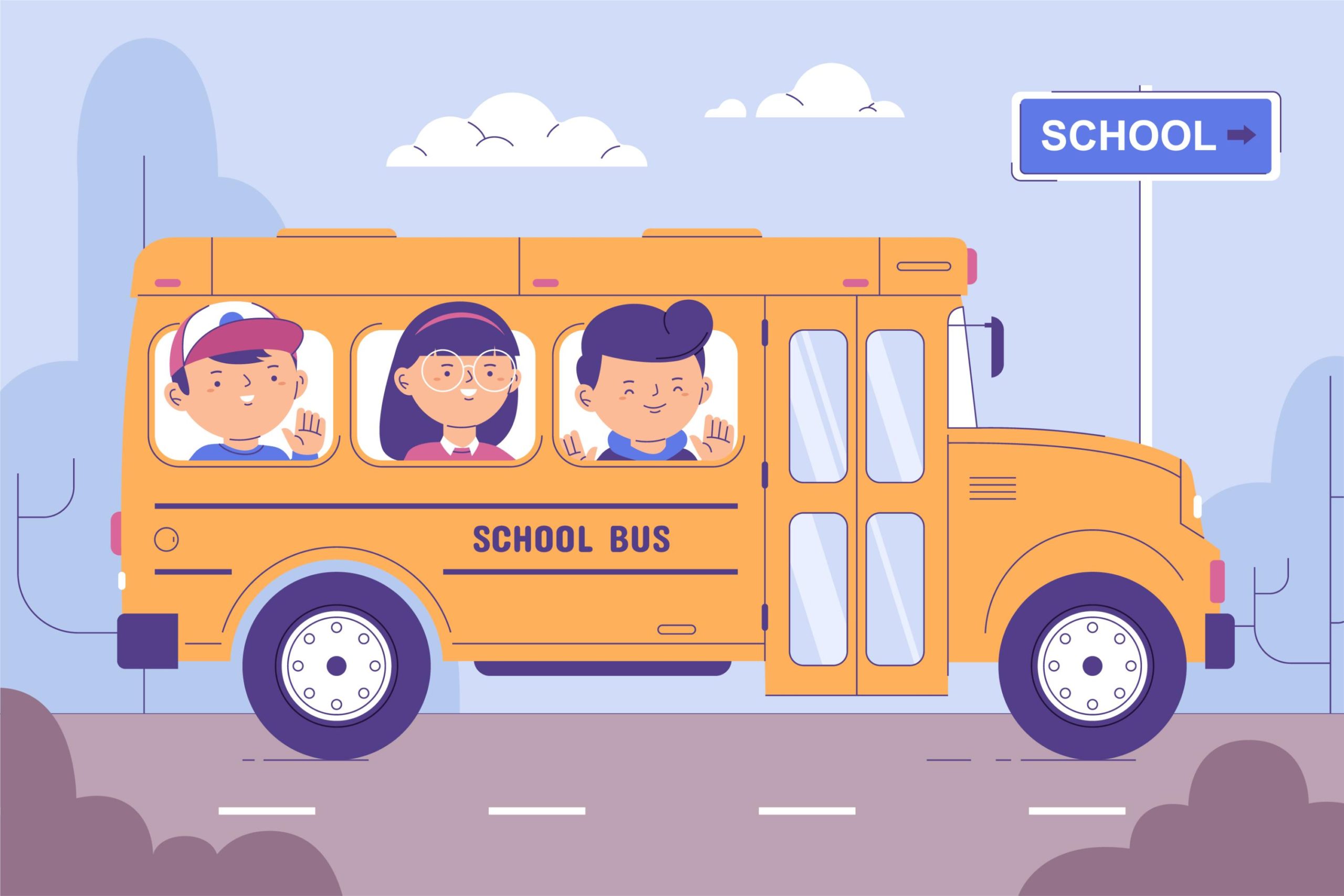
・Buses should be cleaned and disinfected in accordance with BCCDC guidelines
・Buses should be loaded from back to front and offloaded from front to back
・Keep seating consistent and assign seats where possible. If space is available, each student should have their own seat unless sharing with a member of their household
・Middle and secondary school students are required to wear non-medical masks. No student is required to wear a mask if they do not tolerate it
・Masks aren’t recommended for elementary students on buses because they are more likely to touch their face and may need help putting them on and taking them off
・Schools and school districts can consider a transparent barrier to separate the driver from the students
・Schools and school districts should keep up to date passenger lists to share with public health if contact tracing needs to occur
・Students should clean their hands before they leave home, when they leave school, and when they get home
引用:BC州政府
・バスはBCCDCガイドラインに従って洗浄および消毒する必要があります
・バスは後ろから前にロードし、前から後ろにオフロードする必要があります
・座席を統一し、可能な限り座席を割り当てる。 スペースに余裕がある場合は、世帯のメンバーと共有する場合を除いて、各学生が自分の席を用意する必要があります
・中・高校生は、医療用でないマスクが着用が求められます。 生徒がマスクを我慢できない場合、マスクを着用する必要はありません
・バスに乗っている小学生がマスクを着用していると、顔に触れる可能性が高く脱着に手間がかかるため、マスクはお勧めしません
・学校や学区は、運転手と生徒を分離するための透明な障壁を検討できます
・連絡先の追跡が必要な場合、学校と学区は最新の乗客リストを維持して、公衆衛生と共有する必要があります
・生徒たちは家を出る前、学校を出るとき、家に戻ったときは手を洗ってください
In elementary schools, adapt group activities to limit physical contact and reduce shared items.
・Limit use of frequently-touched items that can’t be easily cleaned
・Clean and disinfect laminated materials daily if multiple people touch themClean and disinfect frequently-touched surfaces at least twice every 24 hours, including:
・Door knobs
・Light switches
・Toilet handles
・Tables, desks and chairs used by multiple students
・Keyboards
・ToysAvoid sharing all food and drinks, including homemade foods like birthday treats or bake sale items.
・If they show up at school, keep them from being sharedStudents should label all their personal items and not share them.
There is no evidence that COVID-19 is transmitted on textbooks, paper, or other paper-based products.
・Schools can share books or paper-based educational resources with students引用:BC州政府
小学校では、グループ活動を調整して物理的な接触を制限し、共有アイテムを減らします。
・手入れが簡単ではない頻繁に触れるものの使用を制限する
・ラミネート素材のものを複数の人が触れた場合、毎日きれいにして消毒
以下を含め頻繁に触れる表面は、24時間に少なくとも2回、清掃および消毒します。
・ドアノブ
・ライトスイッチ
・トイレハンドル
・複数の学生が使用するテーブル、机、椅子
・キーボード
・おもちゃ
誕生日のごちそうやベイクセールアイテムなどの手作りの食べ物を含め、すべての食べ物や飲み物はシェアしないでください。
・学校に来たら共有しない
生徒はすべての個人的なアイテムにラベルを付け、共有しないでください。
COVID-19が教科書、紙、または他の紙ベースの製品で感染するという証拠はありません。
・学校は本や紙ベースの教育リソースを学生と共有できます
手指衛生の実践(Practicing hand hygiene)

Rigorous hand washing is the most effective way to reduce the spread of illness.
・Wash hands with plain soap and water for at least 20 seconds
・You don’t need antibacterial soap for COVID-19
・The temperature of the water doesn’t matter, though most find warm water to be the most comfortable
・Have regular opportunities for staff and students to practice hand hygiene
・Help younger students with hand hygiene as needed
・If there isn’t a sink (like when students and staff are outdoors), use portable hand-washing sites or alcohol-based hand rub with at least 60% alcohol.If hands are visibly dirty, soap and water are best. If they’re not available, use an alcohol-based hand wipe followed by alcohol-based hand rub with at least 60% alcohol.
Review information on hand hygiene in a school setting from the BCCDC.
引用:BC州政府
入念な手洗いは、病気の感染拡大を減らす最も効果的な方法です。
・普通石けんと水で20秒以上手を洗う
・COVID-19は抗菌せっけん不要
・お湯の温度は関係ありませんが、温水が一番快適かもしれません
・スタッフと学生が手指の衛星を保つための実践する機会を定期的に持ってください
・必要に応じて幼い生徒たちの手指衛生を手伝う
洗面台がない場合(学生やスタッフが屋外にいるときなど)は、ポータブルの手洗い場か、アルコールを少なくても60%以上含むアルコールベースの手洗いを使用してください。
手が明らかに汚れている場合は、石けんと水が最適です。 利用できない場合は、アルコールベースのハンドワイプを使用してから、少なくとも60%のアルコールを含むアルコールベースのハンドラブを使用してください。
BCCDCから学校の環境での手指衛生に関する情報を確認してみてください。
学校の清掃について(Cleaning the school)
Clean and disinfect frequently touched surfaces at least twice every 24 hours (once during the school day).
This is in addition to a general school cleaning, which should happen at least once a day.
Cleaning Strategies
・Clean and disinfect any surface that is visibly dirty
・Use common cleaning and disinfectant products
・Limit frequently-touched items that aren’t easy to clean
・Empty garbage containers daily
・Clean and disinfect laminated materials daily if multiple people touch them引用:BC州政府
頻繁に触れる表面を少なくとも24時間に2回(学校の日に1回)清掃して消毒します。
これは一般的な学校の清掃に加えて、少なくとも1日に1回は行う必要があります。
クリーニング戦略
・目に見えて汚れている表面はすべて洗浄および消毒
・一般的な洗浄・消毒剤を使用する
・お手入れが簡単ではない、頻繁に触れるものは限定する
・毎日ゴミ箱を空にする
・ラミネート素材のものを複数の人が触れた場合、毎日きれいにして消毒
物理的な障壁の設置(Installing physical barriers)
Add barriers when people can’t keep a healthy distance (two metres) and when people interact with a high number of individuals (like at a front reception desk or in a cafeteria).
引用:BC州政府
人々が健康な距離(2メートル)を保つことができない場合や、人々が多数の個人と(フロントのフロントやカフェテリアなどで)やり取りする場合は、障壁を追加します。
人の流れの管理(Controlling traffic flow)
Use floor markings and posters to show traffic flow throughout the school.
・This may include one-way hallways and designated entrance and exit doorsSchools must keep the same number of exits and ensure they adhere to the fire code.
引用:BC州政府
フロアマーキングとポスターを使用して、学校全体の交通の流れを示すようにしてください。
・これには、一方通行の廊下や指定された出入り口のドアが含まれる場合があります
学校は同じ数の出口を維持し、消防法を順守する必要があります。
学習グループについて(Learning Groups)

photo from BC州政府
A learning group is a group of students and staff who remain together throughout the school quarter, semester or year and who primarily interact with each other. Learning groups were recommended by the Provincial Health Officer to help reduce the transmission of COVID-19.
For example, a learning group could be made up of:
・A single class of students (20-30)
・Multiple classes that sometimes join together for activities like physical education (PE) or music
・A group of secondary school students with the same courses in the same quarter or semesterLearning groups can also include staff, like:
・Teachers
・Specialist support staff
・Education Assistants (EAs)Learning groups provide a range of benefits for students including more in-class learning time, increased peer interaction and support, and decreased feelings of isolation.
引用:BC州政府
学習グループとは、学期、学期、または年間を通じて一緒に留まり、主に相互にやり取りする学生とスタッフのグループです。 学習グループは、COVID-19の伝染を減らすのを助けるために州保健担当官によって推薦されました。
たとえば、学習グループは以下で構成されます。
・ひとつのクラスの生徒たち(20-30)
・体育(PE)や音楽などの活動のために時々一緒に参加する複数のクラス
・同じ四半期または学期に同じコースを持つ高校のグループ
学習グループには、次のようなスタッフも含めることができます。
・教師
・スペシャリストサポートスタッフ
・教育アシスタント(EA)
学習グループは、クラス内での学習時間の増加、仲間との対話とサポートの増加、孤立感の低下など、学生にさまざまなメリットをもたらします。
なぜ学習グループを利用するのか?(Why Use Learning Groups?)
Compared to other public settings, schools have a relatively consistent set of people accessing the building. Learning groups further reduce the number of interactions between students and staff.
・This helps with contact tracing and limits interruptions to learning if a case of COVID-19 is confirmed in a learning group
Learning group sizes
Learning groups are smallest in elementary and middle schools because it is more challenging for younger students to maintain physical distance.
Students in secondary school are better able to minimize physical contact, practice hand hygiene and recognize if they are experiencing symptoms of COVID-19.
・Elementary: 60
・Middle: 60
・Secondary: 120The PHO order on mass gatherings does not apply to schools, as events are defined in the order as an irregular gathering, like a party or celebration.
引用:BC州政府
他の公共施設と比較して、学校は建物にアクセスする人々の比較的一貫したものを持っています。 学習グループは、学生とスタッフ間のやり取りの数をさらに減らします。
・これはコンタクトトレースに役立ち、学習グループ内でCOVID-19の症例が確認された場合に学習の中断を制限します。
グループサイズの学習
学習グループは小学校および中学校で最小です。これは、物理的な距離を維持することは幼い生徒にとってより難しいためです。
高校の生徒は、身体的接触を最小限に抑え、手洗いを実践し、COVID-19の症状が発生しているかどうかをより認識することができます。
・小学校:60
・中学校:60
・高校:120
大規模集会に関するPHOの命令はイベントはパーティーやお祝いなどの不規則な集まりとして順序で定義されているため、学校には適用されません。
オリエンテーションについて(Orientation Week)
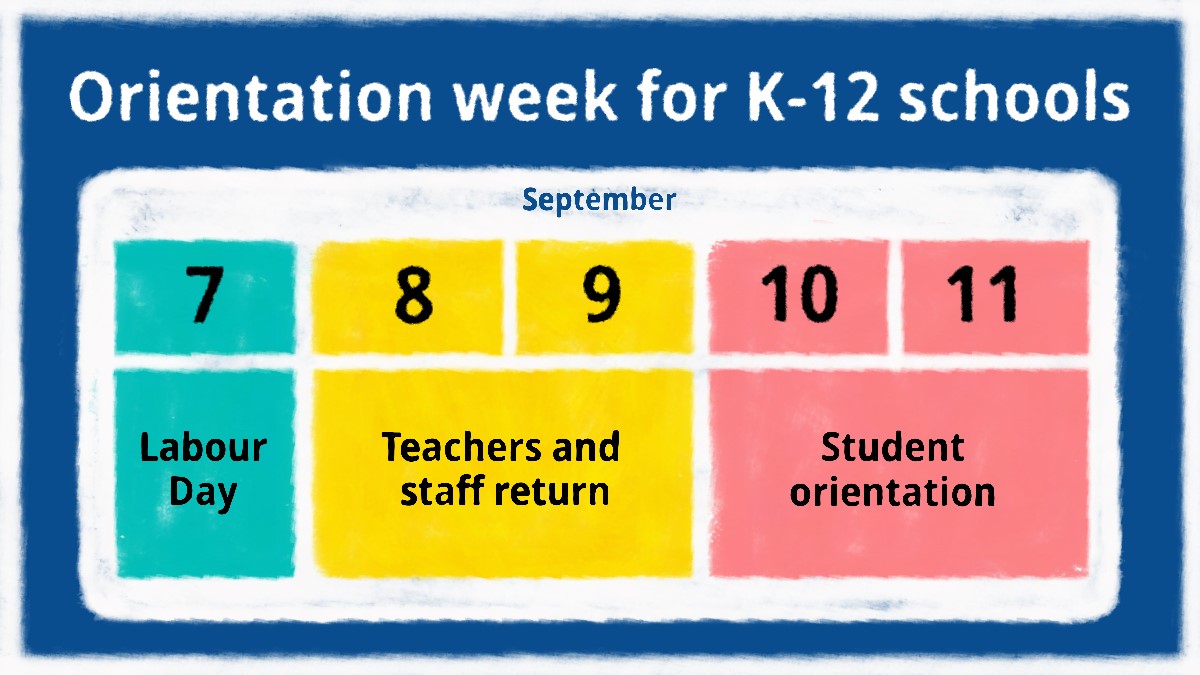
photo from BC州政府
Schools will be in touch with parents with further details about the return to school. To ensure all schools are ready to welcome students into classrooms for the week of September 8-11, 2020, there will be a gradual restart. This gives students and staff extra time to learn about the new health and safety measures in their school and classroom.
September 7
Labour Day, schools are closed.
September 8 and 9
Starting September 8, all staff will meet with their school’s joint health and safety committee to receive instruction on how the updated BCCDC guidelines will work in their school. This time allows teachers and staff to:
・Adjust to their new routines
・Finalize plans for learning groups
・Review health and safety protocols
・Confirm lesson plans that align with the new normal in schoolsSeptember 10 and 11
Students will return to school by September 10 for orientation. Check with your school district to confirm details.
Students can get familiar with classrooms that will look different than they did before the pandemic. During orientation, students will:
・Get assigned to their class or classes
・Find out who is in their learning group
・Practice their new routines
・Familiarize themselves with how to safely move from the class to outdoor and common areas of the school引用:BC州政府
学校は、学校への復帰に関する詳細について親と連絡を取り合います。すべての学校が2020年9月8〜11日の週に教室に生徒を迎え入れる準備ができていることを確認するために、段階的に再開されます。
これにより、生徒とスタッフは、学校と教室での新しい安全衛生対策について学ぶ時間を増やすことができます。
9月7日
レイバーデイ、学校は閉鎖されています。
9月8日および9日
9月8日以降、すべてのスタッフは学校の合同安全衛生委員会に出席し、更新されたBCCDCガイドラインが学校でどのように機能するかについての指示を受けます。この機会で、教師とスタッフが次のことを行えるようにします。
・新しいルーティンに合わせる
・学習グループの計画を確定する
・安全衛生プロトコルのレビュー
・学校の新常識に沿った授業計画を確認する
9月10日および11日
学生はオリエンテーションのために9月10日までに学校に戻ります。詳細については、学区にお問い合わせください。
学生は、パンデミック前とは見た目が異なる教室に慣れることができます。オリエンテーション中、学生は次のことを行います。
・クラスに割り当てられます
・学習グループのメンバーを見つける
・新しいルーティンを体験
・クラスから学校の屋外や共用エリアに安全に移動する方法を理解する
新型コロナウイルスと子どもに関するサイエンス(COVID-19 Science & Children)
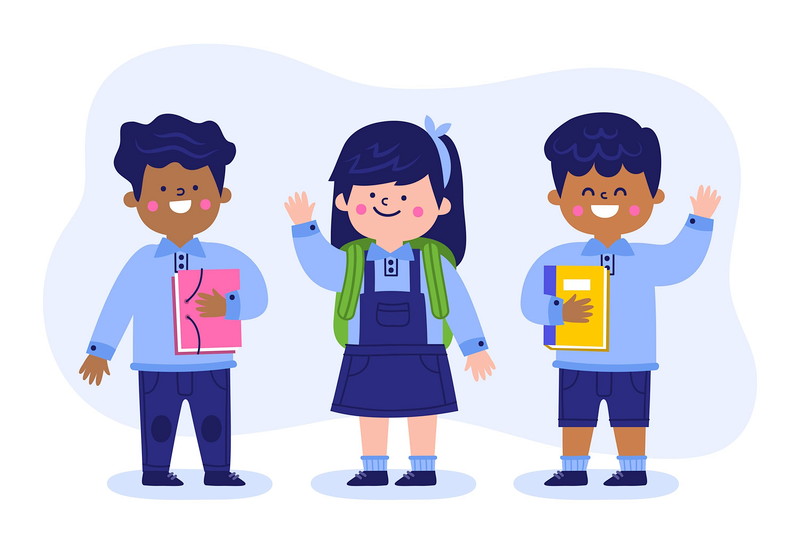
According to current worldwide data, COVID-19 has a very low infection rate in people 19 years old and under, and especially low in children under the age of 10.
Serological tests have confirmed that in B.C., less than 1% of all children tested have been COVID-19 positive.
Studies show that most COVID-19 cases in children originate from symptomatic adult family members, not from peers. Even in family bubbles, adults appear to be the primary spreaders of the virus.
Children who do test positive for COVID-19 usually have milder symptoms, such as a low-grade fever, dry cough, and gastrointestinal issues.
What has B.C. learned from the reopening of schools in other places?
Due to widespread, worldwide school closures, there are few studies on the effects of COVID-19 transmission in school settings.
In places that have resumed in-class instruction, children do not appear to be the primary spreaders of COVID-19.
In schools where there were confirmed cases, there was typically minimal spreading beyond the initial case.
Studies have shown that closing schools and child care facilities has significant negative mental health and socioeconomic impacts on vulnerable children.
引用:BC州政府
現在の世界的なデータによると、COVID-19の感染率は19歳以下の人々では非常に低く、10歳未満の子供では特に低くなっています。
検査により、BC州に検査されたすべての子どもで陽性が確認されたのは1%未満でした。
研究によると、子どものCOVID-19症例の大部分は、友達ではなく感染した成人家族に由来しているとしています。家族のバブルの中でも、大人はウイルスの主要な拡散者であるようにみられています。
COVID-19の検査で陽性となった子どもは通常、微熱、乾いた咳、消化器系の問題など軽い症状が見られます。
BC州が他の場所での学校の再開から学んだことは何?
世界中で学校が閉鎖されているため、学校でのCOVID-19感染の影響に関する研究はほとんどありません。
クラス内での指導を再開した場所では、子どもはCOVID-19の主要な感染者ではないようです。
症例が確認された学校でも、通常、最初の症例を超えて広がるのは最小限でした。
研究によると、学校と保育施設を閉鎖することは脆弱な子どもたちに精神的健康への影響と社会経済的影響を与えることが示されています。
COVID-19プロトコル(COVID-19 Protocols)
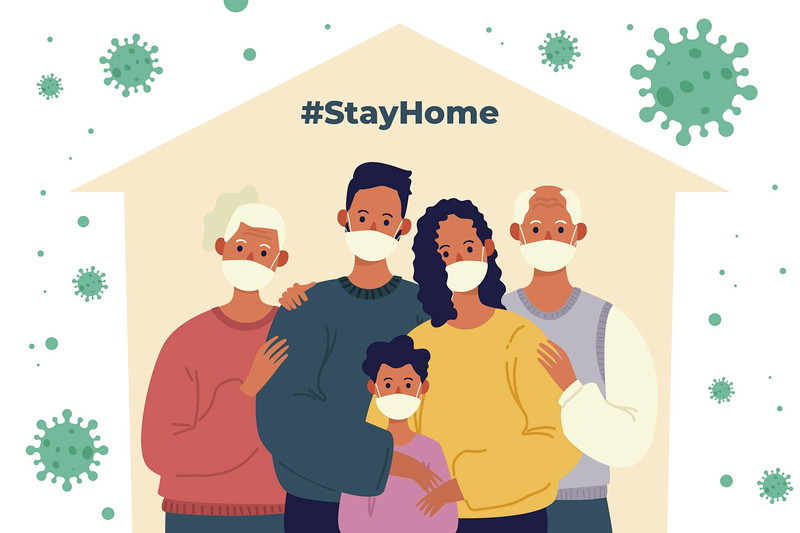
病気の時は家にいる(Stay Home When Sick)
The BCCDC guidelines for schools are firm. If a student, staff member or any other adult has any symptoms of a cold, influenza, COVID-19, or any other infectious respiratory disease, they must not enter the school.
Students, staff members and any other adult must stay home and self-isolate if they have:
・Symptoms of COVID-19
・Travelled outside Canada in the last 14 days
・Identified as a close contact of a confirmed case or outbreakThis includes the children of essential service workers.
引用:BC州政府
学校のBCCDCガイドラインはしっかりしています。 学生、職員、またはその他の成人が風邪、インフルエンザ、COVID-19、またはその他の感染性呼吸器疾患の症状を持っている場合、彼らは学校に行ってはいけません。
学生、スタッフ、およびその他の成人は、次の場合、家にいて自己隔離する必要があります。
・COVID-19の症状
・過去14日間にカナダ国外に旅行した
・確認された症例または発生の密接な接触として特定
これには、エッセンシャルサービス労働者の子どもも含まれます。
日々の健康チェック(Daily Health Screening)
Parent & caregiver responsibilities
Daily screenings start at home. Ask these questions:
・Does your child have the symptoms of a common cold, influenza, COVID-19, or other infectious respiratory disease?
・Has your child been outside Canada in the last 14 days?
・Has your child been identified as a close contact of a confirmed case or outbreak?If the answer is yes to any of these questions, you must keep your child at home, self-isolate, and seek care from a health-care provider.
School administration responsibilities
Ensure staff and other adults know they are responsible for assessing themselves daily for symptoms prior to entering the school.
Clearly communicate with parents and caregivers that they are responsible for assessing their children daily before sending them to school.
引用:BC州政府
親と介護者の責任
毎日の健康チェックを自宅でしてください。 次の質問をしてください。
・あなたの子どもは一般的な風邪、インフルエンザ、COVID-19、その他の感染性呼吸器疾患の症状はありますか?
・あなたの子どもは過去14日間にカナダ国外にいましたか?
・あなたの子どもは確定された症例または発生の密接な接触者として特定されましたか?
これらの質問のいずれかに対する答えが「はい」である場合、子どもを家に滞在させ自己隔離をし、医療提供者にケアを求める必要があります。
学校運営の責任
スタッフや他の大人は、学校に入る前に症状について毎日自分自身を評価する責任があることを確認してください。
学校へ行く前に子どもたちを毎日評価する責任があることを、親やケアギバーに明確に伝えます。
子どもが学校に戻る前のテストについて(Testing Students Before a Return to School)
Testing Students Before a Return to School
At this time, it is recommended that only people with symptoms or people otherwise identified by a health professional should be tested for COVID-19. This includes children.
Testing can also result in false positive and false negatives for the following groups:
・Asymptomatic people
・Those who are very early on in the illness
・Those who may be incubating the diseaseWhat if someone in my household or bubble has COVID-19 symptoms?
・Students or staff may still attend school if a member of their household has cold, influenza, or COVID- 19-like symptoms, provided the student/staff is not sick
・It is expected the symptomatic household member is seeking assessment by a health-care providerWhat if my child has allergies?
・Students and staff who experience seasonal allergies, or other COVID-19-like symptom that are related to an existing condition, can continue to attend school when they are experiencing these symptoms as normal
・If you notice a sudden change in the severity or type of symptoms your child normally experiences, you may want to keep your child at home and seek advice from a health-care provider引用:BC州政府
学校に戻る前に生徒をテストする
現時点ではCOVID-19の検査は、症状のある人または医療専門家が特定した人だけテストを行うことをお勧めします。これには子どもも含まれます。
テストでは、次のグループの誤陽性と誤陰性も発生する可能性があります。
・無症候性の人
・ごく初期の方
・潜伏中の可能性のある方
家庭やバブルの中の誰かがCOVID-19の症状を持っている場合はどうなりますか?
・学生/スタッフが病気でない限り、家庭のメンバーが風邪、インフルエンザ、またはCOVID-19のような症状を持っている場合でも、学生またはスタッフは引き続き学校に通うことができます
・症状のある世帯員が医療提供者による評価を求めることが予期されます
子どもにアレルギーがある場合はどうなりますか?
・季節性のアレルギーやCOVID-19に似た症状で、これらの症状が通常どおり発症している場合、関連する学生やスタッフは引き続き学校に通うことができます
・あなたの子どもが通常経験する症状の重症度またはタイプの突然の変化に気づいた場合は、子どもを家に待機させ、医療提供者に助言を求めることができます
学習グループ内 or 学校で新規感染者が出た場合(Confirmed Case of COVID-19 in a Learning Group or at School)
If a student or staff member develops symptoms at school, protocols are in place.
・If a student or staff member develops symptoms at school, they may be given a non-medical mask and will be separated from their classmates or colleagues
・The individual’s parent or guardian will be contacted to discuss next steps
・Custodial staff will clean and disinfect the areas the person used
・Schools will immediately inform public health of a potential case
・Public health will then:
・Reach out and identify any potential cases
・Get in touch with close contacts
・Recommend 14-day isolation if necessary
・Provide follow-up recommendations if necessary
・Schools will provide learning support to students required to self-isolate
・Together, schools and public health officials will determine if suspending in-class learning is necessaryYou will be notified if your child has been in contact with a COVID-positive person. If that happens, your child is required to self-isolate.
引用:BC州政府
学生またはスタッフが学校で症状を発現した場合、プロトコルが整っています。
・学生や教職員が学校で症状が出た場合、非医療用マスクを与えられる可能性があり、クラスメートや同僚から隔離されます
・次のステップについて話し合うために、子どもの親または保護者に連絡します
・スタッフが感染者と思われる人が使用した箇所を清掃・消毒します
・学校は直ちに公衆衛生に通知します
・公衆衛生はそれから:
・潜在的なケースを見つけて特定する
・親しい人と連絡を取り合う
・必要に応じて14日間の隔離を勧める
・必要に応じてフォローアップのアドバイスを提供する
・学校は自己隔離を必要とする学生に学習支援を提供します
・学校と公衆衛生担当者は、クラス内の学習を中断する必要があるかどうかを決定します
子どもがCOVID陽性の人と接触した場合は通知されます。 その場合、あなたの子どもは自己隔離する必要があります。
出席要件(Attendance Requirements)
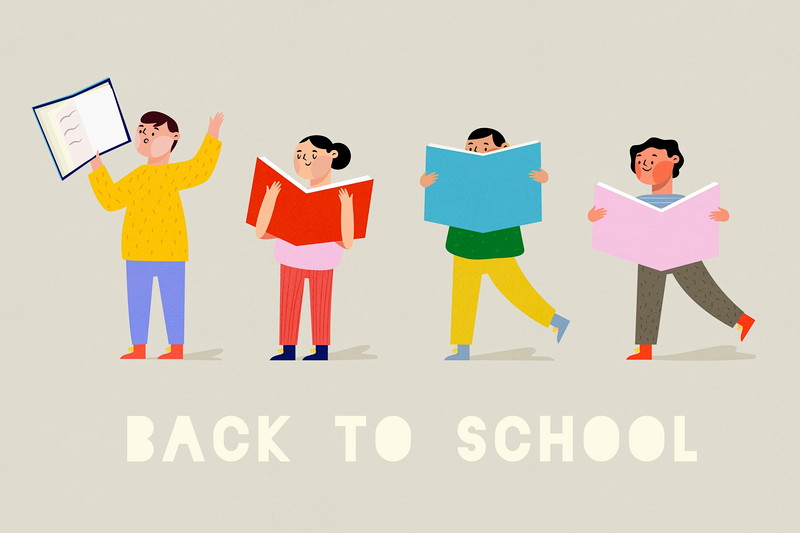
In-Class Instruction
In-class instruction provides students with peer engagement, supports social and emotional development and decreases feelings of isolation.School also provides many students access to programs and services they can’t get at home and is integral to their overall health.
Like every year, students who are registered in “bricks and mortar” schools are expected to attend school in-person, unless they are sick.
・Schools and teachers at the elementary and middle school grades will not be providing daily online options for students
・Students in secondary school courses may be required to complete some learning online, only if in-person instruction is not possible given learning group sizesAlternative Options
Like every September, parents have options for their child’s education.
Before selecting an alternative to in-class instruction, parents should talk to their school district about their options if they later want to return and enrol at their desired school.
We recommend making a decision as soon as possible.
Online and distributed learning
Both public and independent distributed learning schools offer classes. Students in Kindergarten to Grade 7 must take a full course load at one school, while students in Grades 8 to 12 may enrol in courses from a number of different distributed learning schools at one time.There are 48 school districts with 56 public schools offering distributed learning courses. Sixteen independent schools are currently offering distributed learning courses.
Homeschooling
Homeschooling is an alternative method of teaching offered outside the B.C. educational system. Typically, a family member delivers the entire educational program to children at home.Note: Homeschoolers are not eligible to receive a British Columbia Dogwood Graduation Certificate.
引用:BC州政府
クラス内指導
クラス内での指導は、生徒に仲間との関わりを与えて社会的および感情的な発達をサポートし、孤立感を減らします。
学校はまた、多くの生徒が自宅では得られないプログラムやサービスへのアクセスを提供するため、全体的な健康に不可欠です。
例年通り、オンライン上ではなく実存する学校に登録されている学生は、病気でない限り直接学校に通うことが求められます。
・小中学校の学校と教師は、日々のオンラインのオプションを生徒には提供しません
・高校の生徒は、学習グループの規模を考慮して対面での指導が不可能な場合のみ、オンラインで一部の学習を完了する必要がある場合があります。
代替オプション
いつもの9月のように、親には子どもの教育のためのオプションがあります。
クラス内での指導に代わる方法を選択する前に、後で希望する学校に戻って登録したい場合は、保護者が選択肢について学区に相談する必要があります。
できるだけ早く決定することをお勧めします。
■ オンラインおよび分散学習
公立と私立の両方の分散型学習校がクラスを提供しています。幼稚園から7年生までの生徒は1つの学校でフルコースを受講する必要があります。8年生から12年生までの生徒は、複数の異なる分散型学習学校のコースに一度に登録できます。
48の学区があり、56の公立学校と16の私立学校が分散型学習コースを提供しています。
■ ホームスクーリング
ホームスクーリングは、BC州の教育システム外に提供される代替の教育方法です。教育システム。通常、家族が教育プログラム全体を子どもたちに提供します。
注:在宅で学習する子どもは、British Columbia Dogwood Graduation Certificateを受け取る資格はありません。
4. Options: If you'd rather your child learn at home, you have options available. Families can choose distance learning or homeschooling as alternatives to in-class learning if it best serves the needs of their children. +
— BC Government News (@BCGovNews) August 17, 2020
追加のニーズのサポート(Supporting Additional Needs)
International Students
We continue to support international students coming to B.C. to study.
All students who have travelled outside of Canada are required to self-isolate for 14 days under both provincial and federal orders. This includes students who are attending school from abroad.
Students will return to the classroom by September 10, 2020. International students should arrive in B.C. no later than August 26, 2020 to complete their 14-day self-isolation. This can be done with a host family or with the help of federal government officials.
引用:BC州政府
留学生
私たちはBC州に来る留学生を引き続きサポートしています。
カナダ国外に旅行したすべての学生は、州と連邦の両方の命令の下で、14日間自己隔離する必要があります。 これには、海外から学校に通う生徒も含まれます。
生徒は2020年9月10日までに教室に戻ります。留学生はBC州に2020年8月26日までに到着する必要があり、14日間の自己隔離を完了してください。これは、ホストファミリーまたは連邦政府当局の助けを借りて行うことができます。
教室の外で(Outside the Classroom)
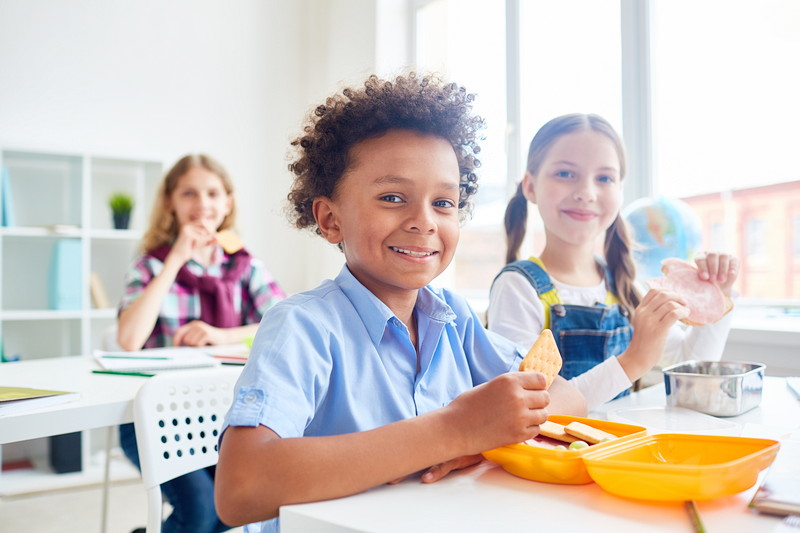
Recess, Lunch & Break Times
Students will remain in their learning group during recess, lunch and break times.Students can socialize with a friend in a different learning group if they follow these rules.
Elementary schools
・Outdoors, minimizing physical contact
・Indoors, maintain physical distanceMiddle and secondary schools
・Consistently maintain physical distance in all environmentsSports, Clubs & Extracurricular Activities
Extracurricular activities including sports, arts and special interest clubs can only occur if:
・Physical distance can be maintained between members of different learning groups
・Reduced physical contact is practiced by those within the same learning groupAssemblies, Concerts & Gatherings
Small gatherings can only occur within a learning group.
・A gathering can include the full learning group (60 or 120) and the minimum number of people needed to meet the gathering’s purpose
・For example, a parent-teacher conference would require one parent per student and a teacherAssemblies, concerts and other large gatherings like a guest speaker should happen virtually.
Tournaments, competitions & festivals
All inter-school events including competitions, tournaments and festivals should not occur at this time.
Work Placements & Apprenticeships
School districts and independent school authorities will assess and determine if it is safe for students to remain on work placements and apprenticeships.
・For work placements that cannot continue in person, districts and schools will determine if alternate methods to continue learning or accumulate volunteer hours for work placements are possible
・Students are encouraged to talk to their teachers about work placements and apprenticeshipsSchool Meal Programs
School districts with existing meal programs will continue to work with community partners to provide meal support to families in need, in alignment with current public health guidelines.
引用:BC州政府
ランチ、休憩時間
学生は昼食時間や休憩時間にも学習グループの中で滞在します。
生徒は以下のルールに従えば、別の学習グループの友達と交流できます。
小学校
・屋外、物理的な接触を最小限に抑える
・屋内、物理的な距離を保つ
中学校および高校
・すべての環境で一貫して物理的距離を維持
スポーツ、クラブ、課外活動
スポーツ、芸術、特別利益クラブなどの課外活動は、次の場合にのみ発生します。
・異なる学習グループのメンバー間の物理的な距離を維持することが必要です
・減らされた物理的な接触は同学習グループ内の人々によって練習されます
集会、コンサートなど
小さな集まりは、学習グループ内でのみ行われます。
・集まりには、完全な学習グループ(60または120)と集合の目的を達成するために必要な最小人数を含めることができます
・例えば、保護者と教師の会議では、生徒と教師ごとに1人の保護者が必要です
集会、コンサート、ゲストスピーカーのような他の大規模な集まりは、オンライン上で行われます。
トーナメント、コンテスト、フェスティバル
コンテスト、トーナメント、フェスティバルを含むすべての学校イベントは、現時点では発生しません。
就業体験
学区と学校当局は、生徒が就業体験を続けることが安全かどうかを評価および決定します。
・対人で続けることができない就業体験については、学区や学校が学習を継続するか、就業体験のためのボランティア時間を蓄積する代替方法が可能かどうかを判断します
・学生は、就業体験について先生と話すことをお勧めします
1. Safety: School districts are working to implement guidelines for a safe return to school, and will all have enhanced cleaning, hand-washing stations, reusable masks and other safety measures. Government has provided over $45.6 million for health & safety measures in schools. + pic.twitter.com/2v04Mz3tnS
— BC Government News (@BCGovNews) August 17, 2020
ということで、以上となります。今回は全ての内容は紹介きれなかったので、更なる詳細が気になる方は以下のリンクを確認してみてください。
一日でも早く子どもたちが安心して学校生活が送れるようになるといいですね。
